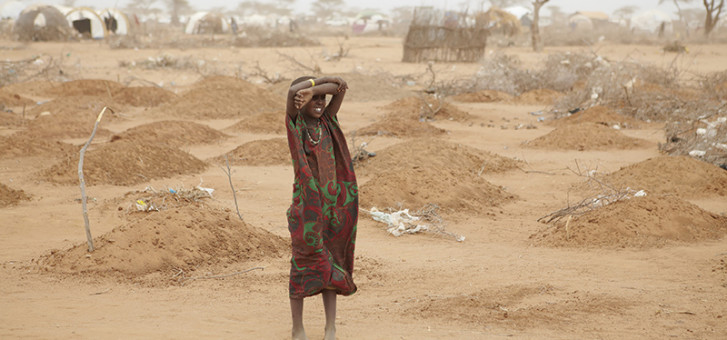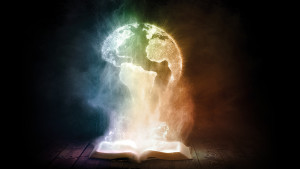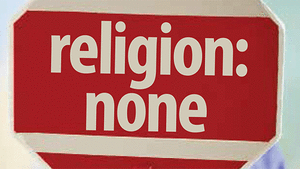Before the days of our modestly reliable weather bureau, guesstimates were made of future weather conditions based on observation: “Red sky at night, sailor’s delight; red sky in the morning, sailor’s warning.”
Apparently this red-sky rhyme has been around a long time. Jesus Himself, under pressure from Jewish leaders to perform a miraculous sign to prove His claim to be the Messiah, reminded them of their own insight into the weather. He said, “When it is evening you say, ‘It will be fair weather, for the sky is red’; and in the morning, ‘It will be foul weather today, for the sky is red and threatening.’ Hypocrites! You know how to discern the face of the sky, but you cannot discern the signs of the times” (Matthew 16:2, 3, NKJV1). Jesus was making the point that all the signs of who He was were right before their eyes, but they were blind to them.
So what would Jesus say today if He were asked about the signs of His second coming?
His disciples once asked Him, “Tell us, when will these things be? And what will be the sign of Your coming, and of the end of the age?” (Matthew 24:3). He replied with an extensive discourse. Many of the signs He mentioned occur regularly in the natural world: “There will be signs in the sun, in the moon, and in the stars; and on the earth distress of nations, with perplexity, the sea and the waves roaring; . . . the powers of the heavens will be shaken. Then they will see the Son of Man coming in a cloud with power and great glory” (Luke 21:25–27).
What a pity if, like those who challenged Jesus for a sign and yet missed the clues that God had given for Jesus’ first coming, we too should miss the signs that signal the nearness of His second coming. Unfortunately, some people deny that the world is approaching this long antipated event. So allow me to take a short detour, and then we’ll return to the topic.
A popular understanding of human origins is that we are the product of chance. Cosmologist Stephen Hawking thus describes humankind as just a “chemical scum.” But if our world and the living things in it are merely the product of chance, then the calamities in our world are as meaningless and purposeless as the forces that supposedly created us.
In contrast, the Bible has told us that we should expect these calamities, because far from being a portent of our doom, they’re signs that we’re nearing the end of a fierce battle between Christ and Satan, the outcome of which will bring suffering and death to an end. Speaking of the day when sin will be done away with forever, the Bible promises that God “will wipe every tear from their eyes. . . . There shall be no more pain, for the former things have passed away” (Revelation 21:4).
No more pain or crying? This isn’t fantasy! It’s God’s promise to all humankind that our present suffering won’t last forever and that God has something wonderful in store for us. But until then, He warned, “Woe to the inhabitants of the earth and the sea! For the devil has come down to you, having great wrath, because he knows that he has a short time” (Revelation 12:12). While much of the book of Revelation uses symbolic language, and “earth” and “sea” have their own symbolic meanings, in this instance the reference might also literally apply to our natural world—the actual land and oceans. And note that the tone of this verse is one of grief!
But does this mean that the God who embraces us with His love causes disasters? Of course not! But keep in mind that we’re in the midst of an epic struggle—a great war between Christ and Satan—and Satan won’t surrender without a fight. The Bible describes the Earth as being worn out like an old piece of clothing, which is likely to tear (Isaiah 51:6). Whether this comes directly from Satan himself or as a result of the natural world having been warped and distorted by the thousands of years of his machinations, we don’t know. What we do know is that we’ve been warned that just before Jesus comes we will see disasters on a grand scale and in surprising places around the globe.
While He was on Earth, Jesus gave unmistakable evidence of His control over nature. For example, the apostle Mark records that on one occasion “He arose and rebuked the wind, and said to the sea, ‘Peace, be still!’ And the wind ceased and there was a great calm” (Mark 4:39). And the Bible also records that inanimate nature itself convulsed when He died on the cross, for “there was darkness over all the land” (Matthew 27:45), and, when “Jesus . . . yielded up His spirit. Then . . . the earth quaked, and the rocks were split” (verses 50, 51).
This isn’t surprising, because He’s the Creator of the natural world (John 1:1) and maintains it in balance. According to the Bible, similar things will happen at the time when Jesus comes the second time, only on a much grander scale. In a graphic description of nature as Jesus returns to Earth, Revelation 16:18 records that “there [will be] noises and thunderings and lightnings; and there [will be] a great earthquake, such a mighty and great earthquake as had not occurred since men were on the earth.”
No “earthquake like it” in history? This coming earthquake must be extremely violent, considering some others that the world has experienced. The 1976 Tangshan, China, quake killed nearly a quarter of a million people. An even worse earthquake occurred in Shaanxi, also in China, in 1556, killing some 830,000. The undersea quake that caused the Japanese tsunami of 2011 registered nine on the Richter scale—and the one when Christ returns will be worse than that!
"Humans are facing famines and the attendant misery, starvation and death that follow."
And what about lightning and thunder? Normally they aren’t that big of a big deal, but the lightning and thunder at Christ’s second coming will be global! The world has never seen a storm like that, with its accompanying destructive winds and hailstones wreaking havoc all around the globe. Leading up to the second coming, nature—the environment—will display convulsions similar to those that occurred at Christ’s death, as His protection is withdrawn. In Revelation 7:1 the apostle John recorded that “after these things I saw four angels standing at the four corners of the earth, holding the four winds of the earth, that the wind should not blow on the earth, on the sea, or on any tree” (Revelation 7:1).
Even now, before the big one predicted for the time of Christ’s second coming, earthquakes are an ever present danger. According to the United States Geological Survey, the Earth experiences about 20,000 quakes a year, most of which are unfelt or undetected. A problem occurs only when the shift is strong enough to be destructive, devastating lives, homes and cities.
While those who believe we exist without meaning or purpose see earthquakes as just another manifestation of cold and uncaring nature at work that one day may destroy humankind, the Bible presents earthquakes as another sign that Jesus’ return is imminent.
In their question to Jesus, the disciples asked Him what would be the signs of His second coming, and He answered, “Then there will be great tribulation, such as has not been since the beginning of the world until this time, no, nor ever shall be” (Matthew 24:21). And although we haven’t quite reached that point, you can be sure that it is fast approaching. Jesus also referred to signs in the sun, moon and stars, and “distress” and “perplexity” at the roaring and tossing sea, and He says that “the powers of the heavens will be shaken” (Luke 21:25, 26). And these things are but “the beginning of sorrows” (Matthew 24:8, italics added), for He added that they also mark the beginning of the time of the end, not the end itself.
From Iran to Japan, from the South Pacific to the far reaches of the icy north, the whole world has experienced earthquakes. And while there’s some debate about whether there are more now than in previous times, what is certain is that in our era, with concentrated centres of population, their impact is greater, and the more so as they increase in intensity.
And Jesus didn’t warn just about earthquakes. He also predicted food shortages, for He said that “there will be famines” (Matthew 24:7, italics added). The reality is that we have increasing food shortages caused by unpredictable weather linked with natural disasters such as floods, heat waves and drought. We also have a rapidly growing global population in which large numbers of people are drifting away from rural situations that are to a great extent self-supporting to urban areas that demand ever more food. And, predictably, the result is famine.
This reality is exacerbated by a global economic system that’s based on supply and demand. Thus, with supply lessened, the price of food goes up and the wealthy eat while the poorer classes are driven to starvation.
Even now, well into the 21st century, with all our technology and advanced agricultural techniques, humans are facing famines and the attendant misery, starvation and death that follow in their wake. Though the causes are often a complicated mix of politics and war, environment, poor agricultural practice and bad weather, famines are still a tragic reality. In his record of the same discourse, the apostle Luke added a further worrying dimension: “There will be . . . pestilences” (Luke 21:11, italics added).
The hope of every generation is that with our advances in medical science we can wipe out diseases. Unfortunately, so far this hasn’t happened. Every year, especially in Africa, disease and pestilences kill as they attack crops and animals. The HIV epidemic has killed millions of humans, and every year or so we’re warned about the potential of various pestilences such as swine flu and bird flu. Scientists and bioterrorism experts were aghast when a biologist in Holland, researching bird flu, created a strain so contagious that it could kill “hundreds of millions” of people. Though none of the more recent epidemics have been hugely destructive,2 we don’t know what will happen in the future.
However, much about the future has been revealed in the prophecies of the Bible. And with our knowledge of them, we can recognise what we’ve been warned about as it unfolds before our eyes.
Fortunately, while these natural disasters are tragic, we don’t have to despair that everything in our world is meaningless and nothing more than a part of what it’s like to live in a cold and uncaring universe. Rather, we can believe in a caring, involved God who loves us, who “did not spare His own Son, but delivered Him up for us all, [therefore] how shall He not with Him also freely give us all things?” (Romans 8:32).
“All things”? That’s paradise, our world made new. Until then, things can look pretty bleak, but we can also draw comfort from something else Jesus said in the context of the tumultuous signs of the last days: “Now when these things begin to happen, look up and lift up your heads, because your redemption draws near” (Luke 21:28).
1. Bible texts in this article are taken from the New King James Version©. Copyright © 1992 by Thomas Nelson, Inc. Used by permission. All rights reserved.
2. Depending on the source that’s quoted, the Spanish influenza of the last century killed somewhere between 20 and 100 million people.








